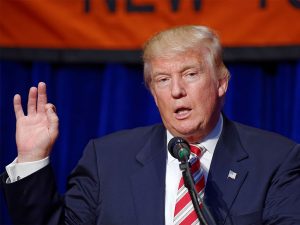
The U.S. Bureau of Labor Statistics released new numbers on U.S. unemployment on May 4, showing that the national unemployment rate has fallen to 3.9 percent as the economy added a net 164,000 jobs last month. Although the new numbers clearly display success of the national economy during the tenure of the Trump administration, the economy still has a long way to go in terms of investing in sustainable development, empowering workers and building a fair economy for the future.
The continued growth of employment that began in mid-2009 is characteristic of the natural forces of an expanding economy that has moved out of a recession. Currently the economy is at “full-employment,” below what the U.S. Federal Reserve calls the long-run natural rate of unemployment of 4.8 to 4.2 percent. The rate refers to the range of workers who will be searching for or in between jobs at any given time that is consistent with a healthy economy.
What the U.S. economy is currently experiencing is a short-run dip below the natural rate of employment, meaning that the vast majority of people searching for jobs can get them relatively quickly, and an unusual portion of what would normally be the workforce is either currently secure in a job or out of the workforce. Unless the Federal Reserve’s models are wrong, which I cannot possibly claim on virtue of not being a professional economist, then this dip will eventually rise back to the 4.2 to 4.8 percent range.
This extraordinarily low unemployment number means that more firms are looking for workers than workers are looking for jobs, which is an indicator of a strong, productive, growing economy. This development is also very good news for workers, as it means that average wages, which hold as much purchasing power in 2014 as they did 39 years ago, are likely to finally begin rising as employers have to increase incentives for workers.
These developments are all good and necessary news for workers and the economy; however, they are natural byproducts of a recession that was staved off with Keynesian fiscal policy during the Obama years and has now led to an economic expansion. In other words, the Obama administration and more importantly, Congress, did what was necessary to pull the country of a recession by temporarily increasing government spending in 2009-2010 and, apart from that, allowed the economy to recover and expand by the natural cyclical force of market capitalism.
President Donald Trump and the new Congress inherited an economy that had largely recovered with an unemployment rate of 5 percent, but had not yet passed on gains to workers. In 2017, real wages (adjusted for inflation) were only about 10 percent higher than they were in 1973, yet productivity has grown by 73.7 percent. Given these developments, the economy was bound to eventually start transferring a greater portion of its gains to workers as workers became less expendable; however, such wage growth is likely to be insufficient to meaningfully bridge the productivity-pay gap.
The only meaningful economic policies enacted by Donald Trump so far are his aggressive environmental deregulation campaign, his signature tax cut and killing the Obama administration’s proposed rule to make 4 million more Americans eligible for overtime pay.
As a rule, these policies have excited investors and given businesses a gift at a time when they are already raking in record profits and the average wages of Americans only have about 10 percent more purchasing power than they did over 30 years ago.
The Environmental Protection Agency’s campaign against clean energy and environmental regulation may be nice for oil and coal industries, but is slowing down the natural economics of the clean energy revolution. Solar energy is set to become cheaper than fossil fuels on average by as soon as 2020, without taking into account the costs associated with climate change, air pollution, environmental degradation and unsafe coal mining practices that are associated with the extraction and burning of fossil fuels. Solar and renewable energy promises a more forward-thinking, sustainable future with the potential of massive new job opportunities, yet that is a sector of the economy that Scott Pruitt and Trump are choosing to suppress.
The tax cut similarly provides obvious benefits to its wealthy benefactors, but not without a cost to the federal budget deficit. Given that the economy was already growing healthily and needed no fiscal stimulus when Trump signed the tax cut last year, the cut serves as little more than a handout to the wealthiest Americans and booming businesses from the federal treasury. The change in unemployment from the time of the tax cut is only 0.2 percent over four months, the same percent change that occurred naturally from August to September of 2017.
The tax cut may have provided a small boost to the economy, but at the cost of investing in our workers and our future. Trump’s anti-labor policy continues keep the growing economic gains locked up at the very top, and his environmental policy actually is going against the progression of the free market. The economy is generally doing well as a result of prudent management during the 2008 financial crisis, but Trump’s presidency has very little, if anything, to do with these economic developments. And don’t even get me started on the current Congress. Although a president alone really can’t affect the economy all that much, if Trump really wants to help the economy, he should look into investing into our workers that are driving rising productivity and building a sustainable future.








